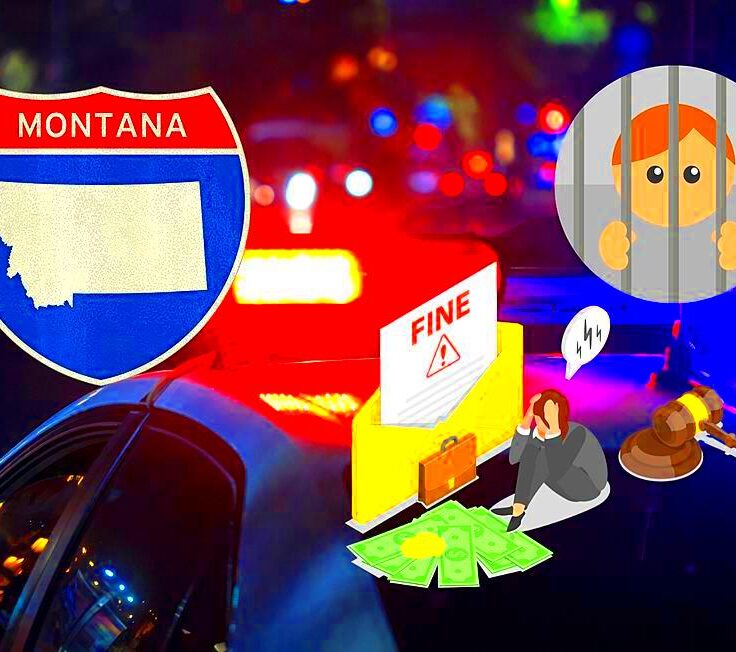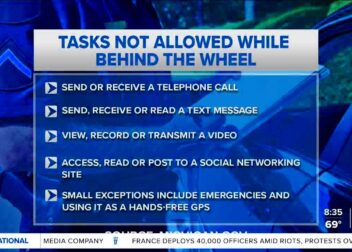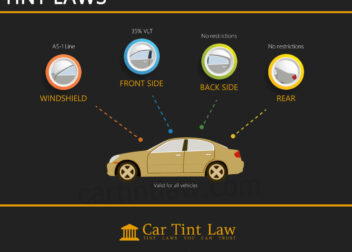Why It Matters to Know About Montana Move Over Law
The Move Over Law in Montana plays a role in safeguarding roadside workers, emergency responders and police officers. When you spot lights flashing from a vehicle parked on the road this law mandates that drivers shift over a lane if it’s safe to do so. If changing lanes isn’t feasible drivers are required to slow down to ensure safety. Familiarizing yourself with this law goes beyond mere adherence; it’s about showing respect and protecting those who diligently strive to maintain road safety.
Purpose and Importance of the Move Over Law

The main objective of the Montana Move Over Law is to ensure a safer workplace for emergency responders and roadside workers. This law goes beyond being a requirement; it is a moral obligation. Those flashing lights serve as a reminder that someone’s life could be in danger. By changing lanes or reducing your speed you play a role in preventing accidents and safeguarding lives. It’s all about fostering a community, of kindness and consideration on the road.
In Montana where highways are often patrolled by service vehicles the Move Over Law is crucial in preventing roadside accidents and saving lives. Its like a gesture of goodwill that can make a difference. I recall my friend who works as a highway patrol officer recounting a near miss he experienced during a stop. It served as a poignant reminder of the importance of such laws.
Who is Affected by the Law?

The Move Over Law in Montana impacts various groups of individuals. These consist of
- Emergency Responders: This group includes police officers, firefighters, and paramedics who are often on the side of the road attending to accidents or emergencies.
- Roadside Workers: This includes construction workers, tow truck operators, and any personnel working to maintain or repair roads.
- Utility Workers: Individuals working on utility lines or other infrastructure tasks also benefit from the Move Over Law’s protection.
Each of these roles is crucial in ensuring the smooth operation of our roads and communities. I remember witnessing a crew busy at work on a country road. Seeing cars pass by and slow down brought reassurance to the workers that their safety was being taken into account. These gestures play a role in allowing workers to carry out their duties without the constant worry of getting injured.
How the Law is Enforced in Montana
In Montana it’s crucial for law enforcement agencies to enforce the Move Over Law. Officers keep an eye on highways and rural roads to make sure drivers follow the rules. They use both marked and unmarked cars to watch how traffic behaves near accidents. If an officer sees a driver not following the Move Over Law they can stop the car and give a ticket.
Enforcement goes beyond imposing penalties; it involves spreading awareness too. For example during a recent highway patrol briefing I learned how officers are trained to handle situations carefully prioritizing their own safety while ensuring drivers comply with the regulations. Regular checkpoints and public awareness initiatives are also integral components of the enforcement approach. These endeavors play a role in informing drivers about the significance of the law and its impact on roadside safety.
Penalties for Violating the Move Over Law
Breaking the Move Over Law in Montana can result in consequences. The penalties aim to discourage drivers from disregarding the law and highlight the significance of road safety. Here’s an overview of the potential outcomes you could encounter if apprehended.
- Fines: The fine for a first-time violation can be significant. Depending on the severity of the offense, fines may range from $100 to $500.
- Points on Driving Record: Violations can add points to your driving record, which may affect your insurance rates and lead to further legal complications.
- Increased Penalties for Repeat Offenders: If you have multiple violations, the fines and consequences may escalate, including potential suspension of your driver’s license.
Friends sharing their experiences with these penalties shed light on the frustration and financial strain that arise from disregarding such regulations. A truck driver friend recounted how a moment of inattention resulted in a significant fine serving as a lasting reminder of the significance of following the Move Over Law.
Tips for Complying with the Move Over Law
Following the Move Over Law is a matter of being aware and attentive. Here are some helpful suggestions to make sure you adhere to the law and prioritize safety for all.
- Be Aware of Your Surroundings: Always stay alert when driving, especially in areas where roadside work or emergency situations are likely.
- Move Over When Safe: If you see emergency lights or roadwork signs, safely change lanes to give the workers space. If changing lanes isn’t possible, reduce your speed.
- Stay Informed: Keep up-to-date with local traffic laws and regulations as they can vary. Montana’s Department of Transportation provides resources and updates on such laws.
- Educate Others: Share your knowledge about the Move Over Law with friends and family. The more people are aware, the safer our roads will be.
Through my personal experiences behind the wheel, I’ve discovered that staying informed and proactive about traffic regulations not only helps steer clear of fines but also contributes to a safer road setting. I remember an instance where just shifting lanes during an emergency on the side of the road had a significant impact on those, affected.
Common Misconceptions About the Move Over Law
The Move Over Law plays a role in ensuring safety on the roads but it is often misunderstood leading to confusion and non compliance. A prevalent misconception is that the law pertains to vehicles only. In truth it extends to include trucks roadside maintenance vehicles and other personnel engaged in work on or near the roadway. Grasping this wider scope is crucial for upholding the law.
Another common misunderstanding is that the Move Over Law is enforced only in areas. In reality this law applies to all roads, including rural highways and less traveled routes. Based on my observations I’ve noticed many drivers wrongly believe that the law doesn’t extend beyond city limits. I remember an instance where a friend driving down a quiet road failed to move over for a roadside service vehicle and was taken aback when she received a fine. This incident served as a reminder of the importance of being aware of the law’s scope.
Certain individuals hold the view that simply slowing down is enough. While it’s important to reduce your speed when changing lanes the law mainly stresses the importance of switching lanes only when it’s safe to do so. Grasping these subtleties can help you avoid unnecessary fines and improve road safety for all.
How the Move Over Law Compares to Other States
Across the United States every state has its own take on the Move Over Law. While the essence of the law stays consistent there are distinct variations in how it is enforced and the consequences for non compliance. In Montana as we previously mentioned drivers are obligated to either change lanes or reduce their speed when nearing emergency situations on the roadside. This approach aligns with several other states although the details may differ.
For instance in California the Move Over Law mandates a reduction in speed when workers are present not just for emergency vehicles. On the other hand states like Texas impose penalties and have a broader definition of what qualifies as a roadside emergency. Through my travels I’ve observed how these differences influence drivers perceptions and compliance with the law. For example I’ve noticed that in certain states there are campaigns promoting the Move Over Law leading to better adherence among motorists.
Grasping these distinctions can be vital, particularly for individuals who often journey across state borders. Its wise to get acquainted with the laws in your area to make sure you’re driving securely and within the bounds of the law no matter where you are.
Frequently Asked Questions
1. What should I do if I can’t move over safely?
If you can’t safely move over, reduce your speed to a level that is reasonable given the conditions. The goal is to ensure the safety of roadside workers and emergency responders by minimizing the risk of accidents.
2. Are there any exceptions to the Move Over Law?
In general, there are few exceptions. However, if road conditions make it impossible to move over safely, or if there is a significant obstruction, your best option is to slow down and proceed cautiously.
3. How can I report a violation of the Move Over Law?
If you witness a violation, you can report it to local law enforcement. Provide as much detail as possible, including the location, vehicle description, and any other relevant information. This helps ensure that the law is upheld and that road safety is maintained.
4. How often is the Move Over Law enforced?
Enforcement frequency can vary. Law enforcement agencies conduct regular patrols and may also set up checkpoints to ensure compliance. Staying informed and aware of the law helps you comply and contributes to overall road safety.
Conclusion
The Move Over Law in Montana goes beyond being a mere collection of regulations; it serves as a crucial safeguard aimed at protecting individuals who put their safety on the line to keep us safe. By familiarizing yourself with and following this law you’re not only steering clear of penalties but also playing a role in creating a driving atmosphere for all. It’s about acknowledging the importance of the efforts made by responders and roadside personnel and demonstrating respect through our behavior, on the road.
Looking back on my experiences and the tales shared by friends it’s evident that even gestures such as shifting lanes or reducing speed can carry weight. So, when you spot those flashing lights or a worker by the roadside keep in mind that adhering to the Move Over Law can truly make a difference. It may seem like a effort on your part but it goes a long way in safeguarding the well being of those who serve, on our roadways.


